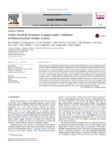Use este identificador para citar ou linkar para este item:
http://biblioteca.incaper.es.gov.br/digital/handle/item/767Registro completo de metadados
| Campo DC | Valor | Idioma |
|---|---|---|
| dc.contributor.author | ABAKERLI, R. B | pt_BR |
| dc.contributor.author | SPARRAPAN, R. | pt_BR |
| dc.contributor.author | SAWAYA, A.C.H.F. | pt_BR |
| dc.contributor.author | EBERLIN, M. N. | pt_BR |
| dc.contributor.author | JARA, J.L.P. | pt_BR |
| dc.contributor.author | RODRIGUES, N. R. | pt_BR |
| dc.contributor.author | FAY, E. F. | pt_BR |
| dc.contributor.author | LUIZ, A. J. B. | pt_BR |
| dc.contributor.author | GALVÃO, T. D. L. | pt_BR |
| dc.contributor.author | MARTINS, D. dos S. | pt_BR |
| dc.contributor.author | YAMANISHI, O. K. | pt_BR |
| dc.contributor.author | TOLEDO, H. H. B. | pt_BR |
| dc.contributor.other | David dos Santos Martins, Incaper. | pt_BR |
| dc.date.accessioned | 2015-05-18T14:00:46Z | - |
| dc.date.available | 2015-05-18T14:00:46Z | - |
| dc.date.created | 2015 | pt_BR |
| dc.date.issued | 2015-04-29 | pt_BR |
| dc.identifier.other | 6459 | pt_BR |
| dc.identifier.uri | http://biblioteca.incaper.es.gov.br/digital/handle/item/767 | - |
| dc.description | Golden, Sunrise Solo and Tainung cultivars of papaya were found to release CS2 when submitted to experimental conditions of dithiocarbamate residue analysis. Three common analytical methods were used to quantitate CS2; one spectrophotometric method and two chromatographic methods. All three methods gave positive CS2 results for all three papaya varieties. Other endogenous compounds present in isooctane extracts of papaya fractions detected via gas chromatography (GC/ITD) using electron ionization (EI) were: carbonyl sulfide, dimethyl sulfide, carbon disulfide, 2-methylthiophene, 3-methylthiophene, 2-ethylthiophene, 3-ethylthiophene, benzylisothiocyanate, benzylthiocyanate and benzonitrile. Control samples were obtained from papaya plantations cultivated in experimental areas, in which no treatment with fungicides of the dithiocarbamate group was applied. Endogenous CS2 levels were compared with true dithiocarbamate residues measured in papaya samples from the field trials following applications of the mancozeb fungicide. Three days after application, true dithiocarbamate residues, measured by the procedure with isooctane partitioning and GC-ITD, were at the average level of 2 mg kg-1. | pt_BR |
| dc.language | en | pt_BR |
| dc.publisher | In: Food Chemistry, 2015. | pt_BR |
| dc.subject | Dithiocarbamate residue analysis | pt_BR |
| dc.subject | Papaya | pt_BR |
| dc.subject | Carbon disulfide | pt_BR |
| dc.subject | Benzylisothiocyanate | pt_BR |
| dc.subject | Mamão | pt_BR |
| dc.subject | Golden | pt_BR |
| dc.subject | Sunrise Solo | pt_BR |
| dc.subject | Tainung | pt_BR |
| dc.title | Carbon disulfide formation in papaya under conditions of dithiocarbamate residue Analysis. | pt_BR |
| dc.type | Artigo de periódico (quando a biblioteca tiver o título do periódico) | pt_BR |
| dc.ainfo.id | 6341 | pt_BR |
| dc.ainfo.lastupdate | 2015-05-18 | pt_BR |
| dc.ainfo.depositante | Merielem Frasson | pt_BR |
| dc.description.notes | In Press. | pt_BR |
| dc.identifier.doi | http://dx.doi.org/10.1016/j.foodchem.2015.04.059 | pt_BR |
| Aparece nas coleções: | Memória Técnica do Incaper  | |
Arquivos associados a este item:
| Arquivo | Descrição | Tamanho | Formato | |
|---|---|---|---|---|
| 2015.-Abakerli-Martins-et-al.-Carbon-Disulfide-Formation-in-Papaya-Food-Chemistry.pdf | 495,3 kB | Adobe PDF |  Visualizar/Abrir |
Os itens no repositório estão protegidos por copyright, com todos os direitos reservados, salvo quando é indicado o contrário.
